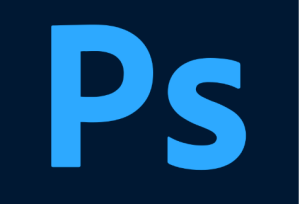
Most people’s introduction to Photoshop begins the same way: you open a photo, accidentally mess up the original, rewind the “story,” and suddenly feel powerful over the image. In today’s article, TechnoWizard will tell you how this program has become synonymous with graphic editing, where it has evolved from a laboratory experiment to a universal Swiss knife for designers, photographers, and artists over three decades.
How it all started
In the late 1980s, brothers Thomas and John Noll created a utility for displaying images on the Macintosh. The first release of Photoshop came out in 1990, and the real breakthrough came with the introduction of “layers” in version 3.0: since then, you could compose a picture from “transparent films,” move elements independently, and not destroy the original. Then came History, the Recovery Brush, Smart Fill, and Smart Objects, each of which solved specific problems: errors, retouching, composition, and scaling without losing quality. In the 2000s, Photoshop moved to the Creative Suite and later to Creative Cloud with frequent updates, plug-ins, and synchronization.
What makes Photoshop special
It’s not about filters – there are plenty of them. The secret lies in the way you work with layers, masks, and blending modes. Layers keep elements separate, masks allow you to reveal/hide parts without erasing them, and blending modes add magic – from Multiply to Overlay. Together, they give you control similar to editing in a video editor, but for pixels.
A little explanation: Layers are the layers of a composition. Mask – a black and white transparency map. Blend Mode – the way layers interact in terms of brightness/color.
Raster vs. vector
Photoshop is a raster editor. It is ideal for photos, textures, collages, and digital painting. For logos and scalable graphics, it’s better to choose a vector (Illustrator, Figma are other editors). At the same time, Photoshop can work with vector paths (Pen Tool, Shape Layers), which is enough for masks, icons in layouts, or basic illustrations.
The real skill in Photoshop is the ability to work without changing the original.
- Adjustment Layers allow you to apply color corrections on top of your image as separate layers. You can easily turn them off or change them.
- Smart Filters apply effects to Smart Objects and let you edit them at any time.
- Camera Raw can work with RAW files without losing quality.
- And create layer compositions (Layer Comps) and switch between different design options in one file.
Scenarios where Photoshop is indispensable
Photographers appreciate retouching: frequency separation, healing brush/stamp (Healing/Clone), lighting and darkening (Dodge & Burn). Designers create glossy compositions, prepare key visuals for landing pages and social networks. Illustrators paint with brushes with textures, use stabilization/aliasing, and color palettes. Even videographers sometimes turn to Photoshop to create footage, titles, or frame-by-frame edits.
6 simple steps to make it work
- Always start with a copy of the layer (Ctrl/Cmd+J) – the original will remain intact.
- Use masks, not erasers. You can’t get back what you deleted, but you can easily get back what you hid.
- Use adjustment layers to correct the image. This allows you to adjust the brightness, contrast, and color on individual layers without altering the original.
- Turn large elements into smart objects before transformations and filters.
- Organize the structure: groups, color-coded labels, clear names – it saves a lot of time.
- Save them as PSD/PSB, and use the required format (JPEG/PNG/WebP/SVG) for publishing. By the way, we also had an article on image formats earlier, so you can read more.
P.S. When working for the web, use sRGB, and for printing, specify CMYK profiles in the printing house, use Soft Proofing to avoid disappointment with the colors on paper.
Soft Proofing is a feature in graphic editors (not just Photoshop) that allows you to simulate how an image will look after printing on a particular printer and paper, but right on your monitor screen.
Integration with the ecosystem
Photoshop interacts seamlessly with other Adobe programs to create a complete ecosystem for creativity.
- Lightroom – for primary photo correction.
- Illustrator – for working with vector graphics and text.
- After Effects/Premiere Pro – for animation and video editing.
And most importantly, thanks to smart objects and the smart layer copy function, you can transfer graphics between these programs without losing quality or the ability to re-edit.
AI / Neurofilters
And tools such as Content-Aware (Fill, Move, Scale) understand the context and draw the background or drag objects themselves. Neural network filters retouch skin, change lighting, and help with noise. All this speeds up the routine – but remember that a professional result is based on composition, chiaroscuro, color correction, and taste. The AI algorithm is just an assistant, not a magician who will do everything for you.
As a result, Photoshop has changed the way we work with visual content, teaching us to think in layers, work without compromising the original, and combine photography with design. That’s why it remains a versatile tool – it’s fast and has a lot of features.
7 interesting facts
- Initially, Photoshop was only for Mac, and the first Windows version 2.5 was released in 1993.
- Prior to the agreement with Adobe, the program was even shipped with scanners called Barneyscan XP.
- The prototype was called Display, then ImagePro, and only before the deal with Adobe did it become Photoshop.
- Revolutionary “layers” appeared in version 3.0 (1994) and completely changed the approach to editing.
- The native PSD format is limited to just 2 GB, while the PSB format supports giant files up to 300,000 pixels on a side.
- Version 5.5 (1999) introduced the ImageReady and Save for Web packages, which was the era of web graphics and GIF animations.
- There are also younger versions – Photoshop Elements (since 2001) for home and Photoshop for iPad (since 2019) with synchronization via Creative Cloud.

